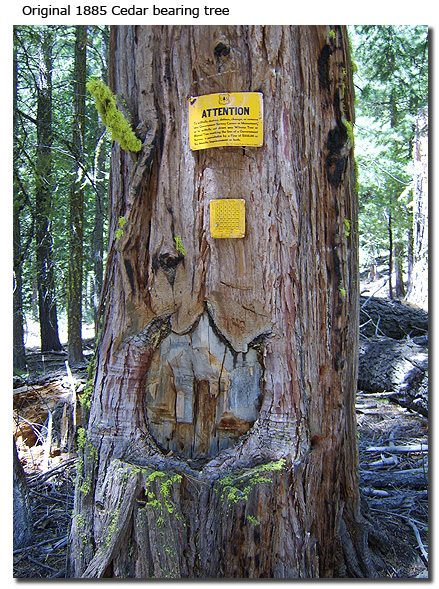
19
INCENSE-CEDAR (Libocedrus
decurrens)
WESTERN RED CEDAR (Thuja plicata)
PORT-ORFORD-CEDAR (Chamaecyparis lawsonia)
Other names: cedar sometimes confused with redwood.
by Species: Arborvitae, shinglewood, red cedar.
Lawson cypress, Oregon cedar.
VERY GOOD
Incense cedar is found in Oregon and California. Western red cedar occurs from northwestern California to southeastern Alaska and in northern Idaho and western Montana. Port-Orford-cedar is confined to southwestern Oregon and northwestern California. Though distinct species they are similar in durability. The wood is soft but decays very slowly. The trees are long lived, possibly up to 1000 years. The Port-Orford-Cedar is subject to a disease which has not yet been controlled so should be avoided as a bearing tree.
The original blazes are seldom found completely healed, are usually open with the face weathered. The scribing ,is hard to detect but can often be seen by side lighting even on fire charred wood. The wood is very soft and seems to retain the impression caused by scribing, as much as the scribe marks themselves. The sawed stumps and fallen logs are very impervious to decay and a cedar stump, with the bark removed, would be preferable to the more inferior hardwoods, such as alder.
Select young trees, 10" to 15" diameter. Blaze a little higher than usual and deep enough to make a smooth face, about 1/2 inch beyond the cambium layer, using a sharp axe. Use a very sharp scribe, for the soft wood tears easily.
The Indians used the cedar bark for making baskets, and removed sections of bark similar to a very large blaze. Caution should be exercised to avoid believing such a tree was an original bearing
tree.
